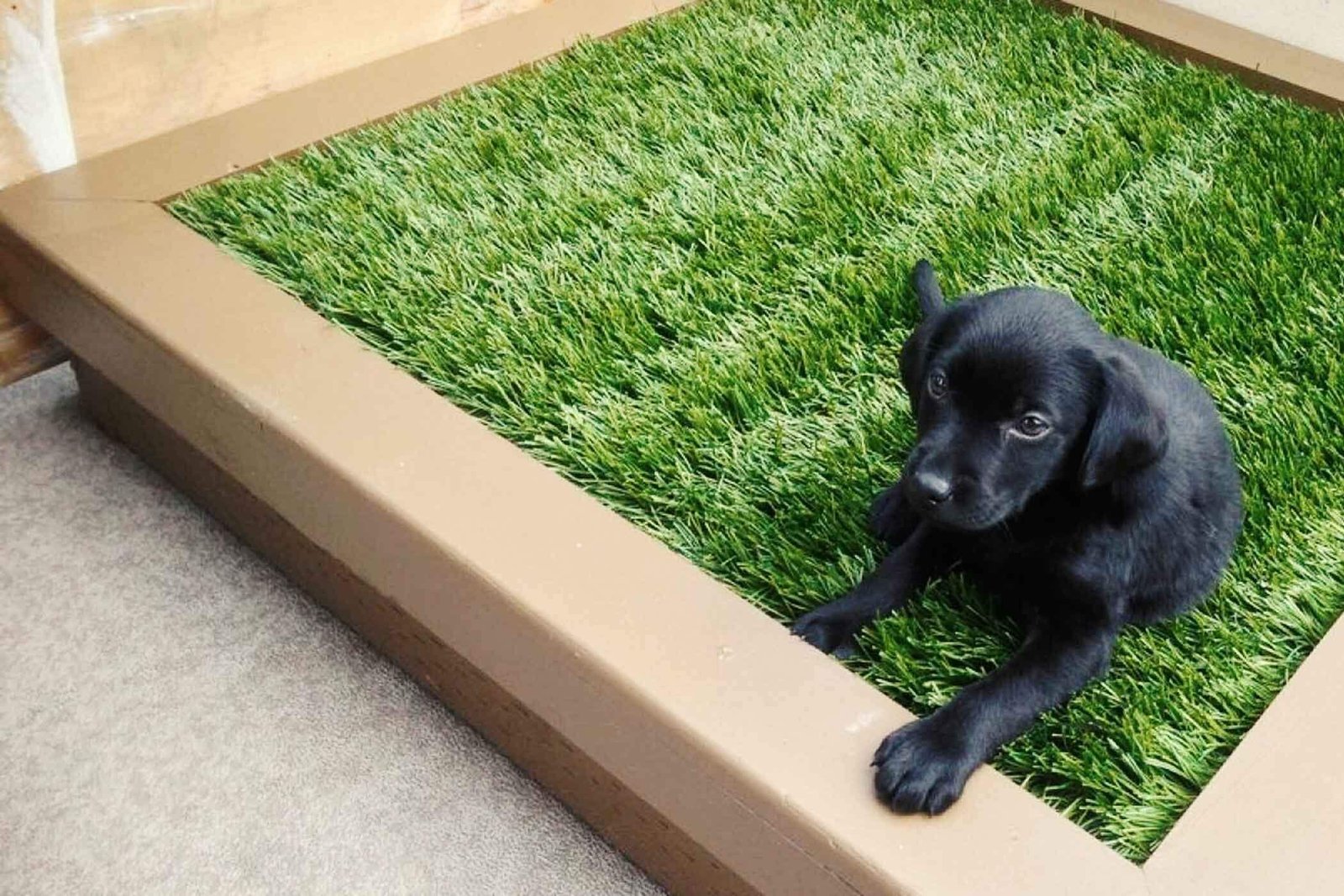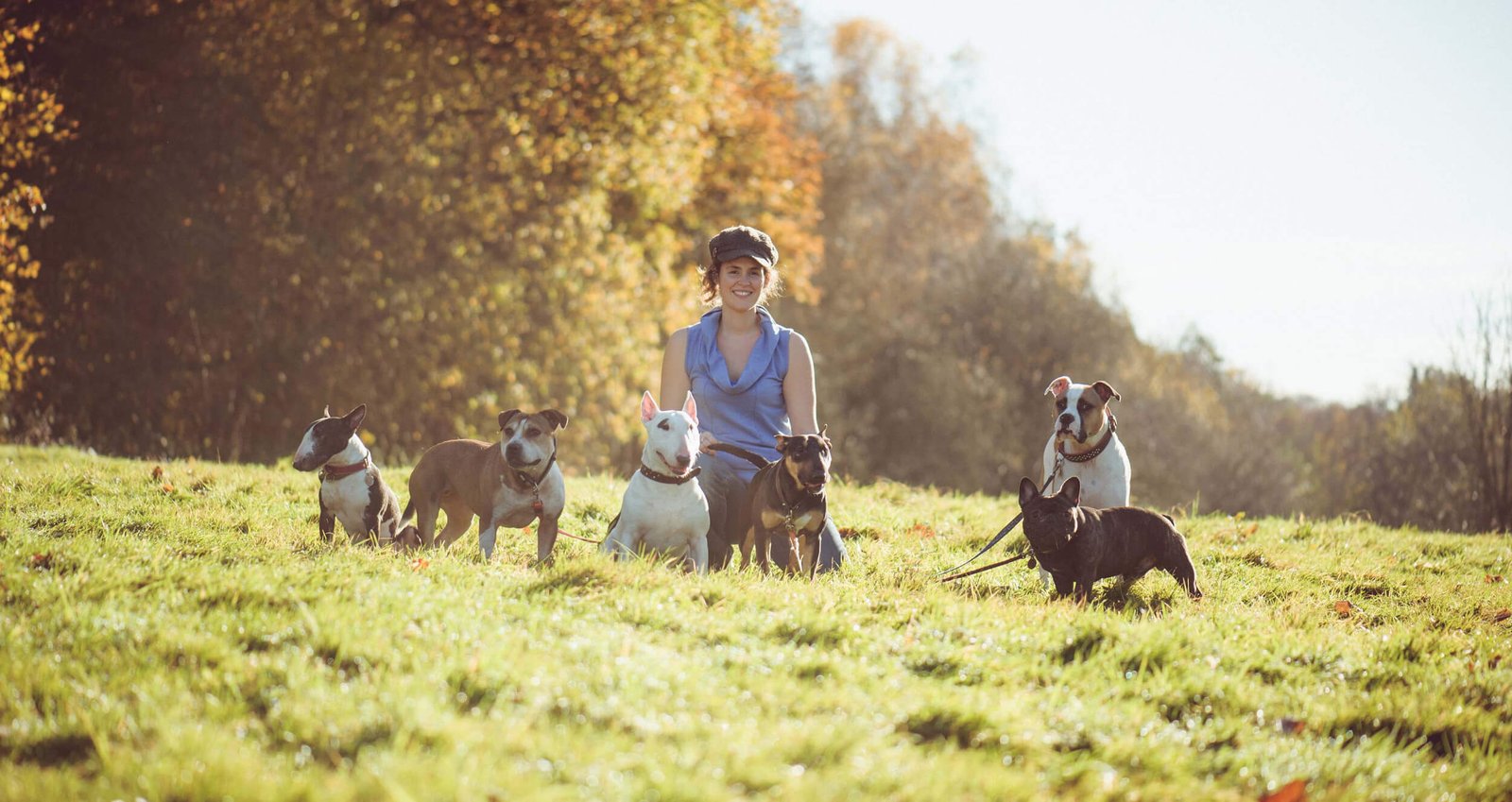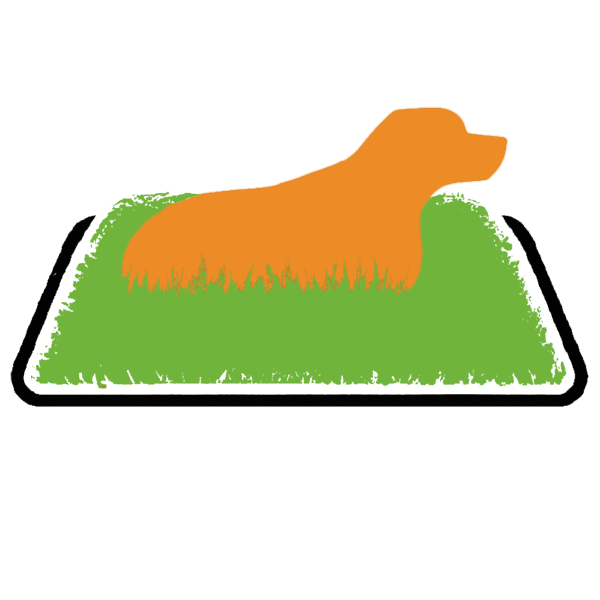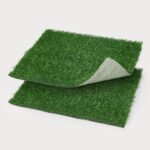An Overview of Grass Pads and How they Work
Grass pads are an innovative solution for pet owners looking to potty train their dogs in the comfort of their own homes. Not only do they provide a safe and sanitary environment for your dog, but they can also help to save you money in the long run. These pads are made from artificial grass designed to mimic the feeling of natural grass, providing your pup with an odorless and comfortable area to pee. They come in various sizes and shapes, making it easy to find one that works best for your lifestyle. These pads require minimal maintenance and replacement costs compared to natural grass or other pee pad solutions. This article will look at how these grass pads work and how they can be used effectively for potty training your dog. How Do Grass Pads Work? Grass pads are an innovative solution for pet owners looking to potty train their dogs in the comfort of their own homes. Not only do they provide a safe and sanitary environment for your dog, but they can also help to save you money in the long run. These pads are made from artificial grass that is designed to mimic the feeling of natural grass, providing your pup with an odorless and comfortable area to pee. They come in various sizes and shapes, making it easy to find one that works best for your lifestyle. Plus, these pads require minimal maintenance, so you won’t have to worry about repeatedly cleaning up messes or replacing the grass. Waste bagsWaste bags are a great way to keep your pup’s poop contained and odor-free and prevent any possible disease transfer to the environment. They come in various sizes, so you can find one that meets your needs and lifestyle, whether for convenience or as an alternative to scooping the poop yourself. In addition, these waste bags are designed with a plasticized film on top that prevents leaks and makes them easy to clean up when they become soiled by your pup’s pee or poo. Plus, these waste bags are biodegradable and don’t contribute to landfills, so you can feel better about your pet’s health and the planet. Paper towel rolls are durable and convenient for quick clean-ups. They’re also great for cleaning up messes, like when your pup is teething or has eaten a lot of food, because they can absorb liquids easily. In addition, they’re smaller in size than cloth towels, so you won’t have to worry about how much space your pup’s waste needs to be removed from the house. Plus, paper towels make it easy to put in a dispenser, which helps you save money and space.
Grass Pads are a revolutionary way to help potty train your pet. They are artificial grass pee pads designed to replicate the feel and look of natural grass, making it more comfortable and inviting for your pet to use. Not only do they provide a more hygienic option for pet owners, but they also help keep your home clean and dry.
Grass Pads are the best artificial grass pee pads for dogs today. They come in various sizes, shapes, and materials so that you can find the right one for your pup’s needs. The unique design of Loobani Grass Pads allows them to absorb liquid quickly, while its anti-splash layer helps keep urine from spreading around. The unique odor-blocking technology also keeps terrible smells from escaping, making it perfect for indoor use.

How to Introduce your Dog to the Grass Pad
Introducing your dog to a grass pad is essential in training your puppy or adult pet. Grass pads provide an easy and convenient way for your furry friend to do their business without messing around the house.
For puppies who haven’t been trained yet, starting with a fake grass pee pad can be helpful as they are easier to clean up and more forgiving if mistakes are made. Once they get used to using the pee pad, you can transition them onto actual grass pads, giving them a more natural experience of going potty outside. What about other risk factors for urinary problems? Some risk factors for a urinary tract issue include:
1. Your dog’s age: Old and senior dogs are at a higher risk of developing urinary problems.
2. The breed of your dog: Certain species are more likely to develop bladder stones, such as the Boston Terrier, Dakota Spaniel, Miniature Schnauzer, and Westie.
This article will cover the best ways to introduce your dog to a grass pad, including how to train a puppy or adult pet and choose the right product for your pup’s needs. We’ll also discuss some tips for effectively introducing your dog to their new pee pad so that you can make sure that toilet training goes as smoothly as possible. Introduce your pet to a grass pad in a safe, controlled environment first, and educate yourself about the best ways to introduce your dog to a grass pad. The best way is by using an outside “pee pad” that is not connected to your yard. This will ensure that you can take step-by-step action without worrying about accidents happening halfway through the process. If you decide on making a homemade pee pad, please note these tips:
Line the outdoors with four squares of newspaper before placing the pee pad down on it (this will minimize any messes from urine).
Vacuum up any messes. Be sure to place the pad in a safe, hidden spot away from your home so your dog will not be able to run into it.
Create a training plan for using their new pad by teaching them to “stay” on their unique (and temporary) outside pee pad.
For adult pets, you can use this process: Start placing grass outside your house and tell them what it is before you leave for work in the morning, or bring some home for them when you return from work. Once they understand ” grass, “you can use a temporary pee pad outside your home.
Introducing their pup to the grass pad can be daunting for many dog owners. But with the proper guidance and preparation, it can be done. Grass pads for dogs can provide a safe and hygienic way for your pup to do their business while avoiding messes on your carpets and furniture. With this guide, you’ll learn how to train your puppy to use a pee pad and what type of grass pads best suit your pup’s needs. We’ll also discuss some of the benefits of using fake grass pee pads for dogs and offer advice on finding the right one. So let’s get started!
Tips for Making Grass Pads Effective for Potty Training
Potty training a puppy is an essential part of pet ownership. Unfortunately, teaching a pup to go potty outdoors can be challenging, especially in cold weather and unfavorable conditions. Many pet owners turn to grass pads as an outdoor alternative for potty training their puppies. Grass pads are a great way to encourage your dog to pee inside while providing them with the comfort of a natural grass surface. With the right tips and tricks, you can ensure that your grass pad is effective for potty training your pup. This article will discuss some of the best ways to ensure that your grass pad is effective for potty coaching your puppy. The Importance of Appropriate SurfaceThe first step to maximizing your grass pad’s effectiveness for potty training a puppy is to ensure that you use a suitable surface. A grass pad should be soft and absorbent and will not allow liquids or debris to pass below ground. Most dogs prefer a fresh-cut lawn with only the top 3-4 inches of soil. You can also cover the property with clean hay or straw to increase its absorbency. Pads made from stone, brick, gravel, or dirt will not be as beneficial as they won’t be as soft or absorbent. The Importance of The Right MaterialMost grass pads is made from natural, sustainable materials like hay or straw. However, you can also use recycled newspaper as a grass pad material, which works well for dogs. If you want to use synthetic grass pads, these should be made of high-quality material such as rubber or plastic with a raised texture that provides good traction for your dog’s paw pads, so they don’t slip on the surface. How to Potty Train Your Dog Using A Grass Pad You should start by placing the potty pad in an area where your dog is used to pooping or peeing. If you put the potty pad in an area where your dog often plays, they will quickly pick it up as part of the game and bring it back to their spot. If your dog is accustomed to an outdoor potty pad, they may have yet to notice that a new one has been placed indoors. If you want to use a grass pad inside and cover the floor with hay or straw, put all the bedding on top before covering it with plastic sheeting for easy clean-up. This also prevents any accidental messes. One of the significant advantages of using a grass pad is that it can be cleaned up quickly and easily. The grass pad can be thrown in the washing machine, unlike if you were to cover your floor with hay or straw, which would have to be hand-cleaned every day as your dog would turn it into a bedding material. Install potty pads in several locations around your home for the best results.
Training a puppy to pee and poop in the right place is essential to pet ownership. It can be challenging to teach a puppy where to go, but grass pads are practical tools for potty training. With the right tips and techniques, grass pads can help you encourage your puppy to pee and poop indoors instead of outside. Grass pads also provide a comfortable surface for your pup, making it easier for them to get used to doing their business inside. With these tips, you can use grass pads effectively for potty training your puppy and make the process simpler and more successful.

The Pros and Cons of Using a Grass Pad as a Potty Training Aid
Potty training is a crucial part of being a responsible pet parent, and many pet owners are turning to grass pads as an aid. Grass pads for potty training provide dogs with a realistic patch of grass where they can go to the bathroom, making the transition to going outdoors easier. While this method has pros and cons, understanding them is critical in deciding if it’s the right choice for you and your pup. This article will explore the pros and cons of using a grass pad as a potty training aid so that you can make an informed decision. The Pros of Using a Grass Pad as a Potty Training Aid Many pet owners have reported success with this method. It can also be reassuring for dogs because they see that their behavior makes them feel more natural going to the bathroom on grass. It encourages your dog to use the pad in its natural habitat, which may prevent the soiling of your home’s carpet or furniture. Some dog trainers recommend this method to help you avoid behavioral problems down the road, such as house soiling. The Cons of Using a Grass Pad as a Potty Training Aid Some owners report that their dogs will not use the pad in their natural habitat. If you’re using a grass pad, it’s essential to ensure your pet is regularly being walked on other surfaces, not just the grass pad. If using a grass pad, you must provide your pet is periodically being walked on different surfaces, not just the grass pad. Some owners report that their dog will start chewing on the pad or refuse to use it in its natural habitat, possibly because they feel like they’re being “punished.” Some dogs may prefer other types of urine pads. Before You Begin Pad Options, You can choose between two main types: a sturdy, self-stick pee pad made of tile grout or vinyl flooring, which you can lay on top of your carpet. When used frequently, these self-stick pads will hold up to repeated use and can be scrubbed clean with soap and water. You can also opt for a disposable pee pad that is usually made of paper or cloth and fits in the palm of your hand. These are convenient because they can be thrown away after use. Disposable pads are more expensive than self-stick pads but are also much better if you have a dog who likes to tear up its pee pads or if you often travel, as they’re light to pack in your suitcase!
Potty training a dog can be time-consuming and difficult. One solution that people may consider is using a grass pad to help with the process. Grass pads are designed to provide an area for your dog to pee and poop in that is more natural and similar to what they would do outdoors. While this method has its benefits, some potential drawbacks should be considered before deciding. This article will discuss the pros and cons of using grass pads as potty training aids for dogs. We will look at topics such as ease of use, cost-effectiveness, odor control, and safety when using grass pads for dogs.
Common Mistakes People Make When Training Dogs With Grass Pads
Training dogs with grass pads can be an effective way to potty train your pup, but there are still some things people need to correct when using this method. Grass pads for dogs provide a safe and convenient way to teach them where it’s appropriate to go potty. Unfortunately, the wrong pee pad can worsen the problem if not used properly. The correct pee pad is typically a large piece of jute placed on the floor or ground. It also needs to be long enough to extend at least six inches beyond the dog’s front paws so that the dog’s entire front paw and foot are touching the pee pad. Some dogs will urinate wherever they are when they’re outside, but if your dog has a problem with potty training, it’s essential to keep them off the grass. Grass can cause health problems for dogs, such as mange and ticks. To avoid this, consider using a cheap pee pad like a piece of absorbent paper or an old t-shirt.
This article will discuss common mistakes people make when training their dogs with pee pads. We’ll also discuss what makes Loobani’s grass dog pee pad unique and why it’s the right choice for many pet owners. By understanding these common mistakes and using a quality fake grass pee pad like the one from Loobani, you can ensure that you have a successful potty-training experience with your furry friend. Common Mistakes When Using Pee Pads For Training Your Dog
- Not Thoroughly Removing the Odor and Taint of the Pee Pad Before Using ItThe first mistake people make is not thoroughly removing the odor and shame of the pee pad before using it. As with any other surface your dog interacts with. You should use soap and water to remove any residual urine odor from the pad when you change it for a freshly washed one. This will help avoid any unwanted potty accidents in your home later on that could cause nasty smells or stains to permeate into other areas of your home.
- Using Multiple Pee Pads When You Need to Change ThemOut of sight, out of mind is not always the case for dogs and pee pads. Many experts believe that using multiple pads when you need to change them will contribute to more potty accidents in the long run because dogs sometimes perceive that one place is “enough” for their needs, even though they are usually given access to multiple pads within a short period.
- Not Cleaning Out Your Dog’s Fur From Their Mouth While They Are Still on PadAnother mistake people make when using pee pads is allowing their dogs to stay in the place with their mouths still open. In this instance, they are not only inhaling airborne particles that might be hazardous, but they are also ingesting them when they burp and fart. This leads to poor breath, or worse yet, a health hazard if the dog has eaten something dangerous. To prevent this problem, it is essential that you first use a towel to clean out your dog’s fur from their mouth while they are still on the pad before letting them take a break.


